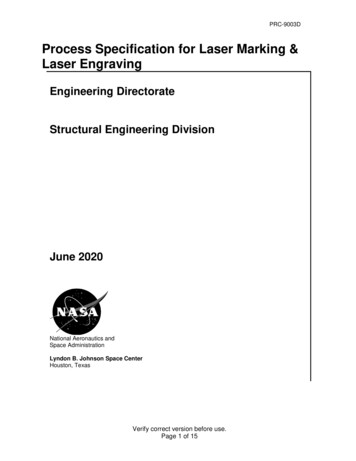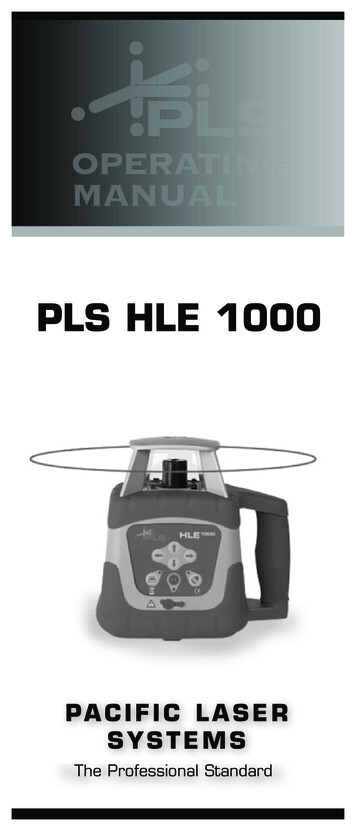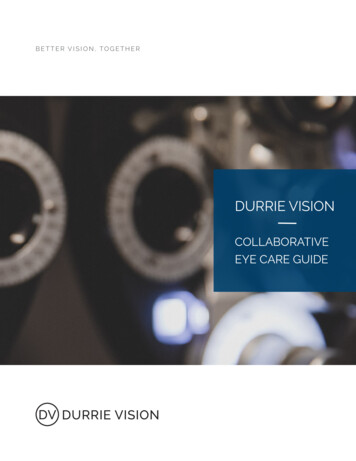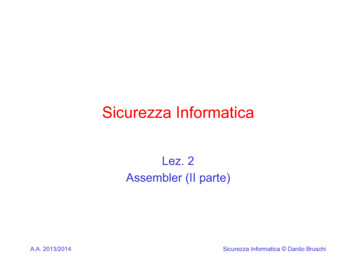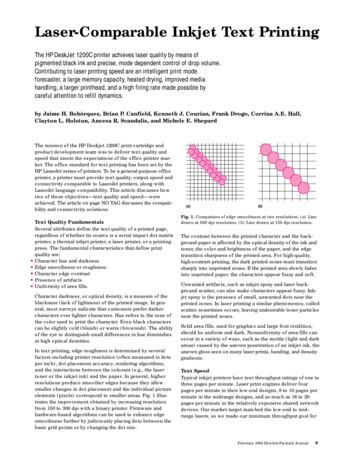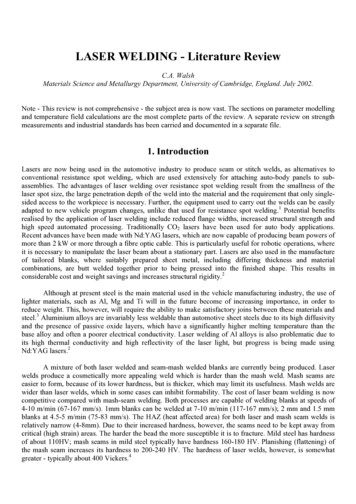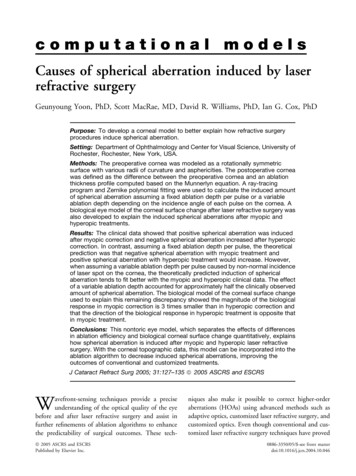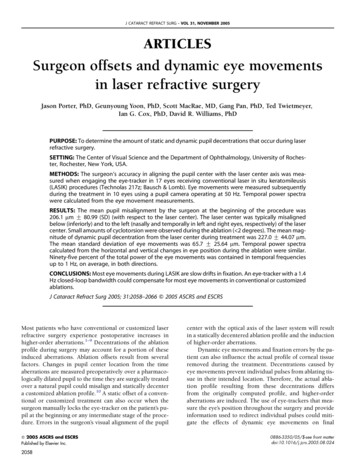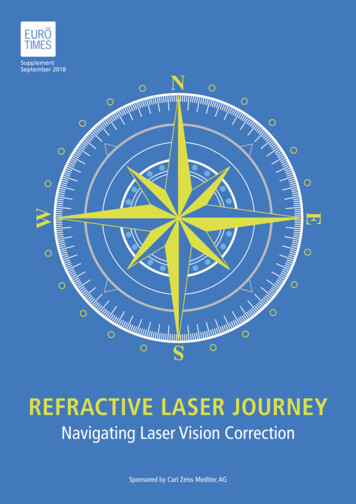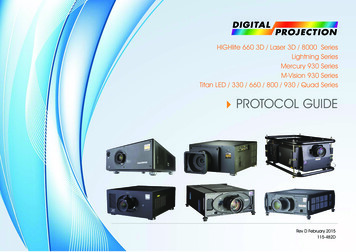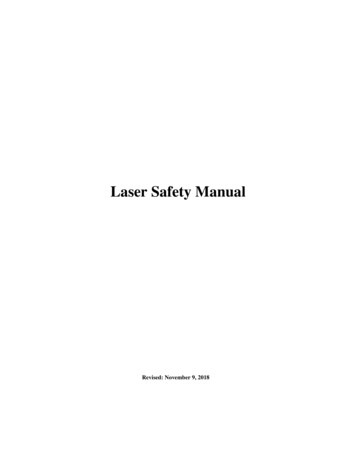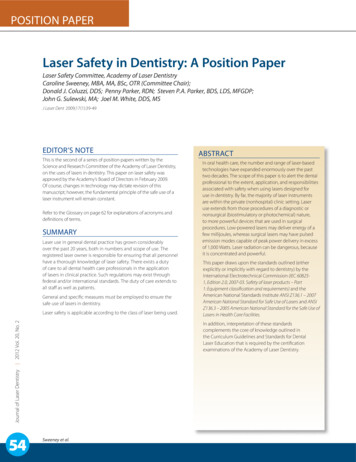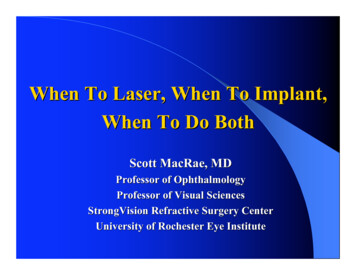
Transcription
When To Laser, When To Implant,When To Do BothScott MacRae, MDProfessor of OphthalmologyProfessor of Visual SciencesStrongVision Refractive Surgery CenterUniversity of Rochester Eye Institute
Refractive Surgery Options: HumanLens Extraction with IOL: ClearLens Extraction (CLE) or Refractive LensExchange (RLE) LASIK or PRK Phakic IOL (PIOL) Combination PIOL & LASIK (or PRK) Bioptics
Refractive Lens Exchange (RLE)or Clear Lens Extraction (CLE) Highhyperopia: 5 Diopters– Consider Refractive Lens Exchange - 61% ofAAO ISRS respondents recommendedRefractive Lens Exchange
Preferred Surgery For 45 yo 5.00 D K RLEP-IOLWAITDuffy, 2006 Survey Data'99'00'01'02'03'04'05'06
Myopic Refractive Surgery Total US Population 286,158,000– Myopic 72,000,00025% Mild ( -2.00 D)46,080,00064% Moderate (-2.00 to -6.00 D)23,040,00032% High ( -6.00 D)2,880,0004%LASIK and PRK for 10D myopia not always advisable
Clear Lens Extraction orRefractive Lens Exchange (RLE)vs Phakic IOL HighMyopia:– With Clear Lens : Clear Lens Extraction: Generally not accepted - 8%RD Rate (1. Collin, 2. Ripandelli) Phakic IOL or PRK/LASIK– With Moderate Cataract (“Not So Clear LensExtraction”) in older patient - consider lensextraction or observe
Preferred Surgery For 30 yo-10.00 Diopter Myope*4040353535313025201510750131031 1NeverPRKLASIK 5LASEK0153RLEP-IOLWAITDuffy, ISRS 2006 Survey Data'05'06
Phakic IOL’s VisianStaar Collamer - Posterior ChamberLens (inserted in front of human lens inSulcus) Verisyse (Artisan) – Iris Clip Lens
Visian Staar Collamer Phakic IOL PosteriorChamber Phakic IOL Efficacy results :– Sanders: FDA 59% UCVA 20/20 (3yrs. PO)– Similar to Verisyse 50% UCVA 20/20 Easierto implant:– Smaller incision– No Iris Enclavation
Visian Staar Collamer Phakic IOL(Intraocular Contact Lens - ICL) Safety Studies:– 1. Sanders et al*., 526 eyes, 3 years:3.6% of eyes cataracts (2.7% ant. subcapsular)0.6% lens removal rate,– 2. Lackner et al**: 75 eyes33% anterior subcapsular opacities18.7% progressive opacities, mean interval for opacification –27 months10.7% required lens removal* Ophthal. 03**Ophthal. 03
The Verisyse Phakic IOLfor the Correction of MyopiaMyopia::(-5 TO -20 D)
Verisyse PIOL Uncorrected VisualAcuityFirst Eyes at Three Years100Percentage of Eyes908280687060504050849271All first eyes(n 231)52First eyestargeted foremmetropoiaand pre-opBCVA 20/20 orbetter (n 88)31302010020/20 orbetter20/25 orbetter20/30 orbetter20/40 orbetterUncorrected Visual Acuity
Verisyse Iris Clip Phakic IOL1,6 & 10 Years Postop* 89 eyes of 49 patients (mean -11.00D Preop)Efficacy Index 0.8, Safety Index 1.1Endo Cell Loss: 8.6% at 10 years no increase from 6 yr. eval.2 line BCVA loss: 2 eyes– 1 Eye Myopic Maculopathy– 1 Eye Fuch’s Dystrophy with vision loss Visually significant age related cataract 2 eyes - 6 years postPIOL (lens removed and CE with IOL successfully doneOverall patients were satisfied*Tahzib, Nuijts et al, Ophthal. Jan 07
VISX High FDA MyopiaLASIK Study Meanpreop sphere: -7.95 Diopters (mostly 50%, 7-8 diopters) 84% UCVA 20/20 or better – 6 months post 77% 0.50 Diopters Sphere – 6 months 0% 2 line BCVA loss
Danasoury Phakic IOL vs LASIKOne-Year Outcomes: Ophthal. 2001Verisyse (n 43 eyes)LASIK(n 41 eyes)-13.9 D-13.4 D-0.64 0.8 D-0.87 0.8 DUCVA 20/20 or better, %20.912.2UCVA 20/40 or better, %88.458.52 or more Snellen lines lost on BSCVA, %0.014.62 or more Snellen lines gained on BSCVA (n)%16.32.4Contrast sensitivity 2 or more lines (n)%4.714.6Mean Preop RefractionMean SE Refraction
LASIK and PRK vs PIOL Laser simpler procedures than Phakic IOL, notintraocular (no PI’s, glaucoma, cataract)Preferable for myopes -6.00 – 10.00 D unless:– Thin Corneas– Ectasia, KC– At risk for severe dry eye Sjogren’s, RA– Myopia likely to progress outside range of LASIK/PRKgiven age, myopic history
Combining Phakic IOL withLASK/PRK – Bioptics Procedure Zaldivarfirst used combination of PIOLwith Staar Collamer ICL because of highmyopia 18 D being undercorrected Bioptics:Reduce residual sphere or astigmatism postPIOL
Summary: When to Zap, When toImplant When to Combine Both HighHyperopia: 5.00 D ConsiderRefractive Lens Exchange High Myopia:– LASIK/PRK or Phakic IOL– Up to -10.00 D Consider LASIK/PRKdepending on anatomy, age– 10.00 D Phakic IOL more likely to give goodoptics
Scott MacRae, MD Professor of Ophthalmology Professor of Visual Sciences StrongVision Refractive Surgery Center University of Rochester Eye Institute. Refractive Surgery Options: Human Lens Extraction with IOL: Clear Lens Extraction (CLE) or Refractive Lens Exchange (RLE) LASIK or PRK
